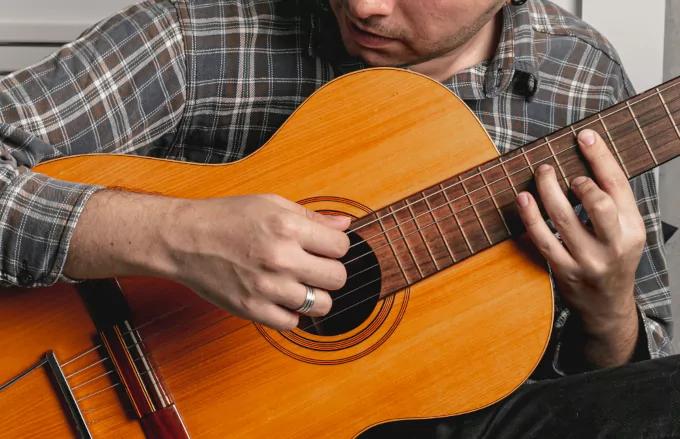Bending is an important and expressive technique in guitar playing that adds depth, emotion, and personality to a guitarist’s performance. Understanding and mastering bending may elevate your playing to a whole new level, whether you’re a beginner or a seasoned guitarist. In this post, we’ll look at the different types of bending and some recommendations for improving your bending skills.
The process of pushing or tugging a guitar string along the fretboard to modify its pitch is referred to as bending. When properly executed, the pitch of the note being played rises and falls smoothly, producing a distinct and attractive impact. Bending is a popular technique in numerous music genres, including blues, rock, country, and jazz, and is a signature technique of several well-known guitarists.
Learn to Play the Guitar
Types of Bending:
The most common sort of bend is the half-step bend, in which the guitarist raises the pitch of the note by one half-step. A half-step bend, for example, would raise the pitch of a note on the 7th fret of the G string (which is a B) to a C.
Whole-Step Bend: The guitarist raises the pitch by a whole step or two half-steps in this sort of bend. Bending the note on the 7th fret of the G string (B) to a D, for example.
Pre-bend: A pre-bend is when the string is bent to a specified pitch before striking it. This method is frequently used to generate a smooth and controlled bend, particularly in solos or melodic parts.
Release Bend: To produce a release bend, first bend the string to a higher pitch and then gently release the bend to return to the original pitch.
Unison Bend: This involves bending one string to match the pitch of another, resulting in a harmonious sound.
Bending is an important technique for guitarists because it allows them to mimic the emotional aspects of the human voice. It gives the music life and emotion, allowing players to add subtle subtleties and inflections to their tunes. Bending improves a guitarist’s capacity to communicate and connect with their audience, resulting in a more fascinating and memorable performance.
How to Improve Your Bending Technique
Develop Finger Strength: Bending necessitates the development of finger strength and control. To strengthen your fretting hand, perform finger exercises, scales, and arpeggios.
Use More Than One Finger: When bending strings, use more than one finger to uniformly distribute pressure and obtain a smoother bend.
Pay Attention to Intonation: It is critical to precisely bend the string to the desired pitch. Use a tuner to check your accuracy and train your ear to discern pitch fluctuations.
Practicing with a metronome is vital, especially when playing lead guitar. Bending using a metronome can help you improve your rhythmic precision.
Vibrato and Bending: Combine vibrato with bending to give your bends more brightness and richness. Vibrato is the process of oscillating the pitch of a bent note to produce a shimmering effect.
Experiment with Different Bends: Experiment with different bends on different strings, frets, and note combinations to broaden your tone palette and creative possibilities.
Listen to the Masters: Take a look at guitarists like Jimi Hendrix, Eric Clapton, B.B. King, and David Gilmour who are known for their bending methods. Take note of their solo phrasing, dynamics, and usage of bends.
Bending is an essential part of guitar playing that every guitarist should investigate and master. It enables players to integrate emotion and expression into their music, distinguishing them as distinct artists. Understanding the many sorts of bends and implementing them into your playing with precision and creativity will certainly elevate your guitar playing to new levels. So, grab your guitar, practice those bends, and let your emotions flow through the strings!
Image by Freepik

